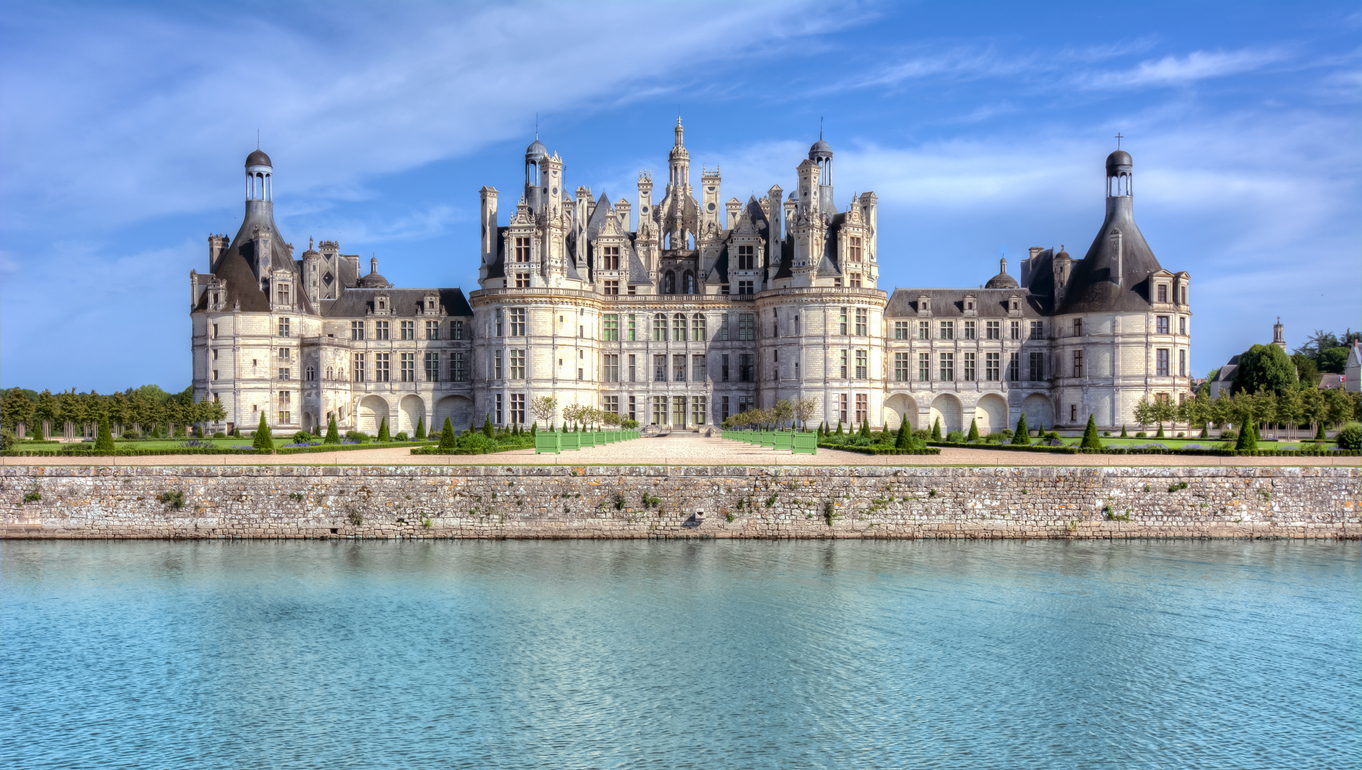Discover Some of the Best Loire Valley Wineries and Castles to Visit
The history of the Loire Valley and viticulture is largely the history of France too. Dating back 2,000 years, the first vines date back to the 5th century, with more developed viticulture dating back to the 9th century. Spanning more than 800 sq km (over 300 sq miles), the vast Loire Valley sits in the northern and central parts of France.
- Discover Some of the Best Loire Valley Wineries and Castles to Visit
- Overview of the Loire Valley Wine Region
- Getting to and Around the Loire Valley
- Top Wineries to Visit in the Loire Valley
- Three Must Visit Castles in the Loire Valley
- Take the Trip!
- Frequently Asked Questions about Loire Valley Wineries & Castles
Overview of the Loire Valley Wine Region
From the coast of the Atlantic north of Bordeaux, to the southwest of Paris, and spanning all of the way to the center of the country, this region has grown over the centuries and includes more than 6,000 wine producers.
The access to water certainly helped create the success of the region and the proliferation of wine. With Nantes along the Loire River, and with access to the Atlantic Ocean, this created a natural export hub to other parts of Europe. Additionally, the Loire River was key to transporting wine long before railways and modern transportation existed.
RELATED: Best French Wine Regions to Consider Visiting This Year
There are a multitude of varied soil types across the entire region, each has an impact on the terroir and end-product of the wines. Additionally, different climates play into the impact of terroir. In the west, a marked maritime climate is influenced by the Atlantic ocean. As you move further inland and to the east, a much more continental climate prevails with more seasonal and temperature variation.
The Loire Valley is vast, containing 4 very different wine regions, and over 185,000 acres planted to vineyards. There are more than 85 appellations under the Appellation d’origine contrôlée (AOC) and Indication Géographique Protégée (IGP) systems.
RELATED: 10 Important Facts About the Loire Valley Wine Region
For the sake of this travel guide, we’ll focus on the Middle Loire, a bit on the Lower Loire (closest to the Atlantic Ocean), and a touch on a newer AOC in the region: Coteaux du Vendômois.
The Upper Loire is the geographic center of France, with a very different, warmer climate than the rest of the Loire Valley. Notably, possibly for another separate trip, the Central Loire contains the world famous Sancerre region, known for Sauvignon Blanc. Both of those latter regions deserve an additional deep-dive at another time!
Coteaux du Vendômois
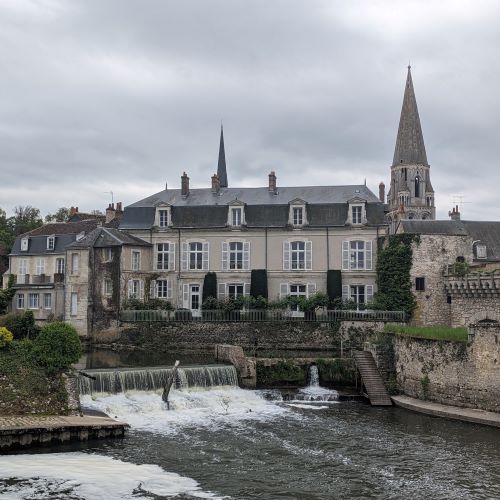
Surrounding the town of Vendôme, the Coteaux du Vendômois vineyards lie in the Loir Valley (a different river than the Loire!) to the west of Vendôme. This is north of Amboise and Tours. However, the Coteaux du Vendômois is markedly cooler and different varietals are permitted. The appellation covers 27 communes and only became a new AOC in 2001, although there have been centuries of winemaking and viticulture dating back to the 10th century. For white wine, Chardonnay is permitted and can comprise 20% of white wines, but Chenin Blanc is the star here. For red wine, Pineau d’Aunis (at least 50%), with Cabernet Franc, Pinot Noir and Gamay authorized as additional varietals than can be used, but Pineau d’Aunis is the workhorse red varietal for red wine here.
Last but not least – the wine! We will also recommend some of our favorite producers and wineries to visit when in this part of the Loire Valley. And if you would like some additional excursions, we have you covered with our favorite castles in the region. Keep reading below for more!
Getting to and Around the Loire Valley
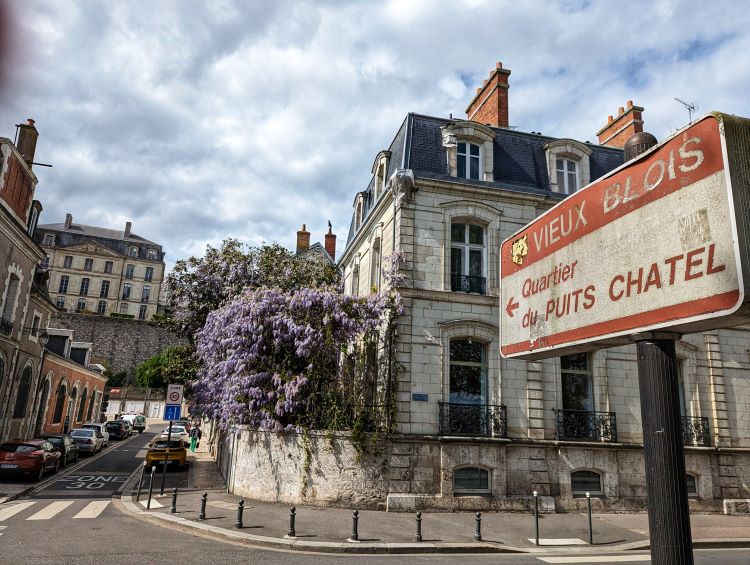
With the focus being on the Middle Loire here, we recommend having a homebase along the Loire River, with easy access to many wineries and castles throughout the region. Orléans, Tours, and Blois all work well as a hub for exploring the area.
We stayed in Blois, located directly on the Loire River, and situated along some of the major roads along the river as well. Blois is a medieval throwback town – one that is beautiful to experience on foot, lending that old world, European village feel at every turn.
The Denis Papin Staircase is a fun link between the upper old town, and the more modern lower part of town directly on the Loire River. It consists of 120 stairs and is often painted or decorated by artists.
In other parts of Blois, you still have modern accommodations, and everything you might need, from banks, to stores, walkable shops and restaurants. The Château de Blois is also in the middle of town and is very much a recommended stop. Take a look at these charming hotels in Blois if you decide to use it as your homebase.
RELATED: Beautiful Luxury Wine Hotels & Vineyard Resorts to Stay at Around the World
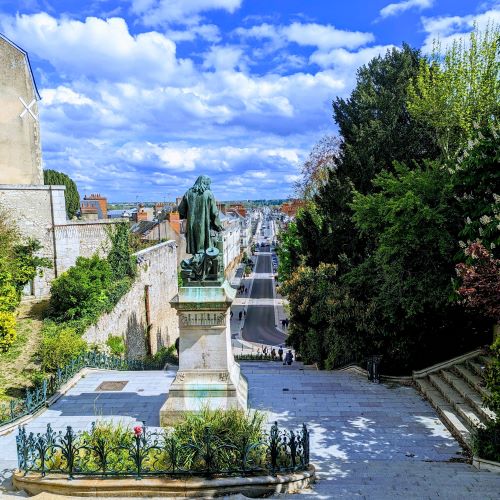
The train stop in Blois is “Blois-Chambord.” From Paris, there are many trains daily and they consistently are around an hour and half. Most trains leave Paris from the Paris Austerlitz train station, but make sure to double check which train station you are leaving from Paris.
Tickets can be booked online! Just make sure to have your ticket printed or on your phone as the QR code will be your ticket that will be scanned once you board the train.
If you are going to Blois from the southwest, near Bordeaux, there are also high-speed trains and regular regional trains as well. This trip from Bordeaux takes about 2.5-3 hours and there is a layover at the train station in Tours, not too far from Blois. From other parts of France – the southeast, or eastern parts of the country, trains will take you to Paris first either way.
Tips For Navigating Blois
Pro Tip: If you’re staying in Blois and interested in visiting castles, stop by the Tourism Office (l’Office de Tourisme) to inquire about Castle Pass deals.
Taxis are abundant in the area, as are drivers or cars for hire specializing in castle day trips.
Similar to a lot of Europe, public transportation is abundant as well. You can also take shuttle buses from Blois to some of the Loire’s castles.
If you choose to rent a car, it’s recommended to acquire an international driving permit, which can be done online (with your regular license).
Top Wineries to Visit in the Loire Valley
If you’re like us at Winetraveler, we’re constantly seeking out the best wine and best producers when we’re visiting a region. Here are six Loire Valley wineries you can’t miss! We’ve broken them out by their specialty grape/wine (ie: Chenin Blanc, Cabernet Franc, etc.).
If you’re unsure about navigating yourself and would prefer to have a local guide take you around the region(s) for wine tasting, there are excellent wine tours that leave from both Tours and Blois. Some of these can be customized and/or include castle stops. As we’ve mentioned, day trips are also bookable from Paris.
For Chenin Blanc
AOC Vouvray
Domaine Sébastien Brunet
La Côte, 37380 Reugny, France
Sébastien Brunet is one of the rising stars and part of the next generation of dedicated producers in Vouvray. In Chancay, located in Touraine, between Tours and Blois, Sébastien creates beautiful expressions of chenin blanc, focused on clean, bone-dry, yet precise wines. He also makes sparkling wines, both Pétillant Naturel and traditional method wines.
Since Sébastien took over the estate in 2006, the farming has been completely organic, no chemicals are used, and grapes are harvested by hand. Wines are regularly fermented in a mix of oak and steel, yet consistently matured in oak barrels, with extended lees contact for added texture. Sébastien also bought an old mushroom farm – in order to create and mature his wines in the already-dug-out limestone caves and tunnels. His style is minimalist, yet his wines are expressive, precise, and bursting with high acidity.
Domaine Huet – L’Échansonne
13 Rue de la Croix Buisée, 37210 Vouvray, France
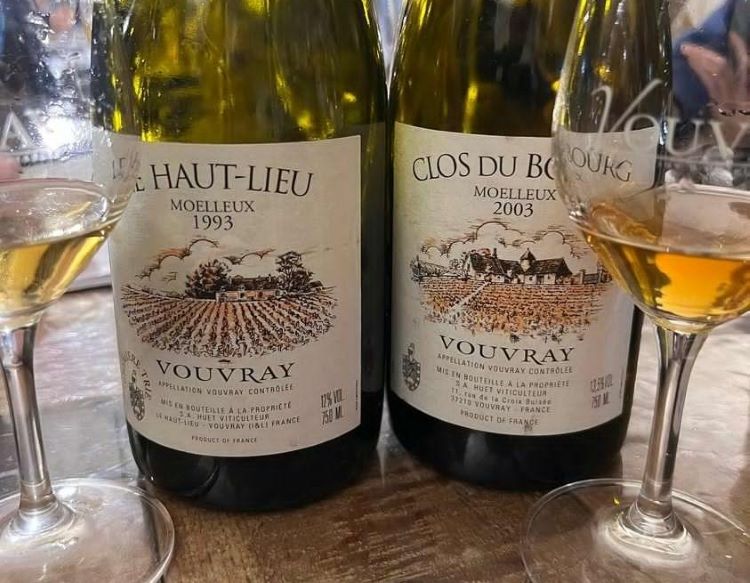
Perhaps one of the more well-known producers of Chenin Blanc is Domaine Huet. In the heart of Vouvray, Domaine Huet has acquired some of the most prestigious vineyards, capable of producing some incredible age-worthy wines. In terms of styles, the Domaine Huet produces Sec (dry), Demi-Sec (semi dry), Moelleux, or Moelleux 1ère Trie (“first selection”) from the aforementioned principal vineyards. They also produce a sparkling Pétillant Naturel.
Domaine Huet is biodynamic, hand-harvested, with a mix of various soils across different vineyards. They use a mix of steel and old oak for most sec and demi-sec wines. But most notably, their prestigious sites lend richness and layers of fruit consistently in every vintage.
For Cabernet Franc
AOC Chinon
Domaine Olga Raffault
1 Rue des Caillis, 37420 Savigny-en-Véron, France
When we talk about Cabernet Franc, the home is in the Loire Valley. One of the more well-known areas for Cabernet Franc is Chinon, and one of the most renowned producers is none other than Olga Raffault.
Today, the estate is run by Olga’s granddaughter and her husband. Although they make a small amount of white wine, they are undoubtedly known for their site-specific single vineyard Cabernet Franc. They consistently produce a lower cost entry-level Cabernet Franc that is released much earlier than other bottles. But they are most well known for their three distinctive, site-specific Cabernet Franc bottles: “Les Picasses,” “Les Peuilles,” and “Les Barnabes.”
Les Picasses is considered the highest level, reserve bottle, and one that is sought out by many collectors. All of these single-vineyard bottles are also aged for longer amounts of time, and released at later dates, creating a better product with extended bottle aging as well. Olga Raffault is also organic and everything is harvested by hand.
AOC Saumur-Champigny
Domaine des Sables Verts
66 Grand Rue, 49400 Varrains, France
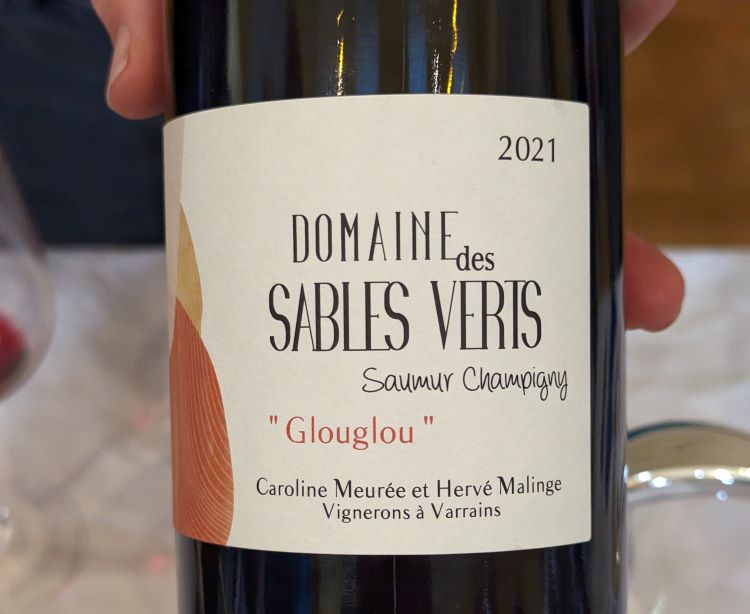
Domaines des Sables Verts is the project from a couple who took over the estate in 2019. With their 16 hectares in Saumur-Champigny, mostly clay-limestone soils, they now have an environmental certification and are practicing organic. Although they do have one Chenin Blanc, their specialty is Cabernet Franc.
They have a few different versions of Cabernet Franc: Chaintres, Glou Glou, and Les Poyeux. Glou Glou and Poyeux are unoaked/fermented in stainless steel. Both are exquisite and bright, with Glou Glou being the “drink now” bottle of the two. In contrast, Chaintres is fermented in oak and much more powerful, structured, and layered, one to hold, and one that is built for cellaring. These are excellent wines from the next generation of producers already putting Saumur-Champigny and the Loire Valley on the map internationally.
For Melon de Bourgogne/Melon B
AOC Muscadet Sèvre et Maine
Château du Cléray – Sauvion
Château du Cleray, 44330 Vallet, France
Located in Vallet, in the northeastern corner of the Muscadet Sèvre et Maine appellation, Château du Cléray lies east of Nantes. Pierre-Jean Sauvion nows runs Château du Cléray and is the winemaker as well. Most of his Muscadet wines see a little bit of skin contact, stainless steel vats for fermentation, and a regimented routine of batonnage – lees stirring – for that soft, textured wine that Muscadet Sèvre et Maine is most well known.
Although they make a few other wines, from other grapes other than Melon de Bourgogne/Melon B, Château du Cléray is undoubtedly one of the preeminent ambassadors for Muscadet and the region as a whole. Their wines can be found in 80 countries around the world. Their dedication to expressing terroir in their Muscadet is evident. Whichever bottle you might find or taste in person, it’s crafted with precision: a textured core, plush fruit, excellent acidity, and a crunchy signature seashell quality that Muscadet is best known.
For Pineau D’Aunis
AOC Coteaux du Vendômois
Domaine Colin
5 Rue de la Gaudetterie, 41100 Thoré-la-Rochette, France
Winemaker Pierre-Francois Colin is the 9th generation of the family making wine at this domaine, dating back almost 300 years. His father, Patrice Colin, was instrumental in putting Domaine Colin and the Coteaux du Vendômois on the map, with the AOC Coteaux du Vendômois becoming officially recognized as an AOC in 2001. Perhaps most unique is their – and the region’s/AOC’s – focus on Pineau d’Aunis.
Pineau d’Aunis is a lesser known red grape; it is very much soil and terroir driven, taking on different aspects depending on the vintage and soils in which it is planted. It has lower tannins, a medium to lighter body, very good acidity, a unique savory sage-like quality, and most of all, a notable and consistent peppery note every year. Domaine Colin makes some red blends, with Pineau d’ Aunis, Cabernet Franc, and Pinot Noir, but the varietal Pineau d’Aunis (with some age) is worth seeking out.
Among tasting around 30 wines from the Coteaux du Vendômois we recently tasted, Domaine Colin’s older (2015) Pineau d’Aunis was the standout. This newer region and Domaine Colin are certainly worth a day trip, or afternoon slightly north of the main stretch of producers along the Loire River.
Three Must Visit Castles in the Loire Valley
The Loire Valley is known for world-class, cool-climate wines. But it is also a beautiful region to visit with much more than just the wine. The region is also well-known for many of the castles/châteaus in the area.
RELATED: The Most Beautiful Castles to Consider Visiting in Europe
Here are three Loire Valley castles we highly recommend, in addition to the Château de Blois – easily walkable and accessible on foot while you’re staying in Blois.
Château de Chambord
Château, 41250 Chambord, France
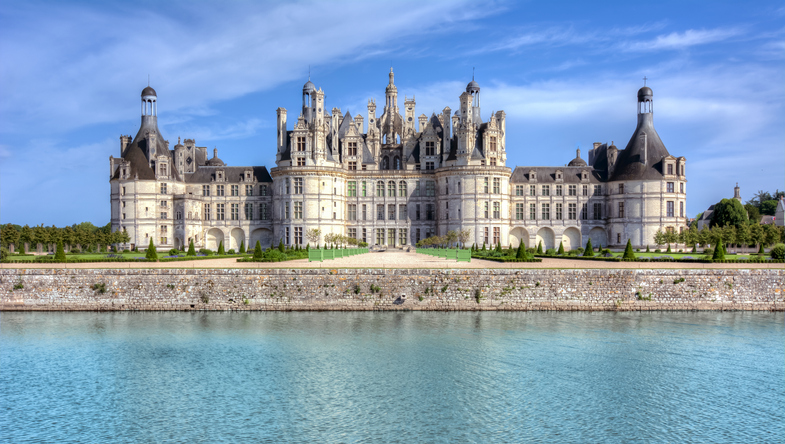
Château de Chambord, in Chambord, Centre-Val de Loire, is the largest chateau in the Loire Valley. It has been a UNESCO World Heritage Site since 1981. A massive architectural feat, it’s a classic French Renaissance architecture château.
Construction was started in 1519 on Château de Chambord by the King of France, Francis I. However, this château was merely used as a hunting lodge. Francis I only used it seven times. Today, you can visit the estate and purchase tickets for a “Horse and Bird of Prey Show,” very similar to how this hunting lodge was originally used centuries ago.
Of note, it is unclear who the original design can be attributed to, but many people believe Leonardo da Vinci was involved. A double staircase — two staircases intertwined that never meet — is one of the hallmarks of Château de Chambord. The design later influenced additional castles throughout Europe, one of the most notable being Schwerin Castle, on Lake Schwerin in Germany. Ironically, Francis I maintained his primary residence at two other castles, Château de Blois, and Château d’Amboise.
Today, Château de Chambord is a massive estate, consisting of forests (with downloadable hiking trails), gardens rivaling Versailles Palace, guided tours in multiple languages, self-guided tours, and a entire headset set-up for a virtual reality film documenting a journey from Italy to Chambord.
For the wine lovers and winemakers out there, you are able to purchase oak barrels made from the oak forests on the estate!
~20 minutes by car from Blois (and shuttle buses run consistently). You can also opt to arrange a private and guided tour by a Loire local. You can purchase tickets to Château de Chambord ahead of time and browse additional guided tour options here.
Château Chaumont Sur Loire
Château de Chaumont-sur-Loire, 41150 Chaumont-sur-Loire, France
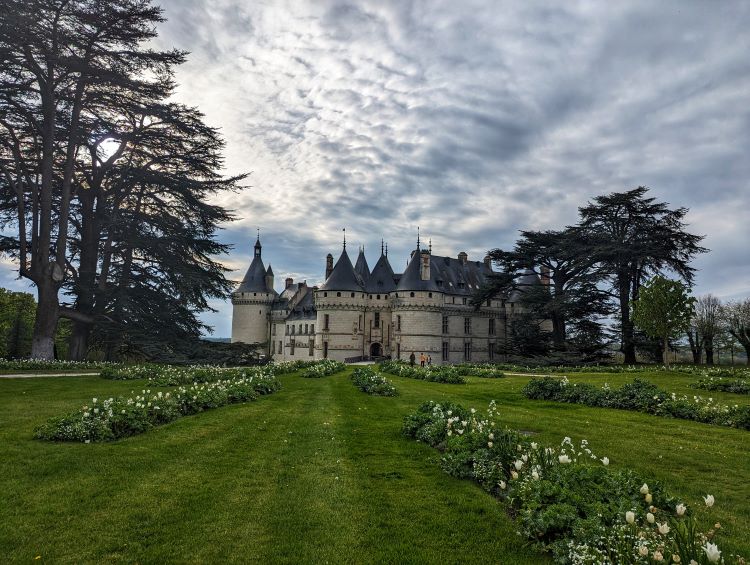
First, make sure to enter the full name of this castle when conducting any searches! There are two other Châteaus with “Chaumont” in the title. Chaumont Sur Loire is in Chaumont Sur Loire, Centre-Val de Loire, in the heart of the Loire Valley. You guessed it, it sits directly above the Loire River.
The construction for this castle originally started in the 10th century. Over the centuries it was passed onto families, torn down through wars, reconstructed, sold, and now sits as an incredible garden and museum open to the public. Most notably, the English-style gardens are a perfect way to spend a leisurely afternoon.
Since 1992, every year from April-October, the Château de Chaumont Sur Loire has hosted the International Garden Festival. Garden designers from around the world create unique gardens throughout the property and it is completely open to the public.
~20 minutes by car from Blois, or take a look at a variety of tour options.
Château de Chenonceau
37150 Chenonceaux, France
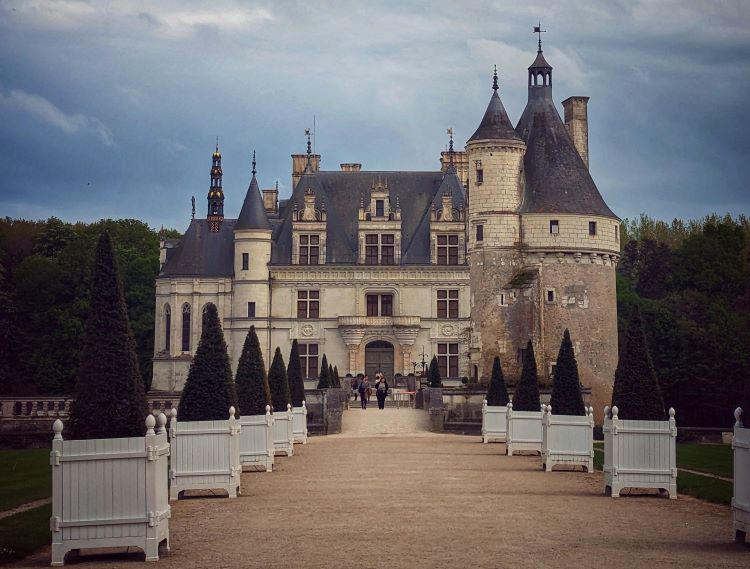
Château de Chenonceau is in Chenonceaux, Indre-et-Loire, Centre-Val de Loire. It is an enormous, complex estate, visually stunning, and one of the best-known châteaux in the Loire Valley. It is also the second most visited château in the entire country, second only to Versailles Palace.
December 6th – January 6th is a particularly renowned time to visit for floral enthusiasts. A floral workshop is on display in every room in the castle, the floral designers prepare for 3 months for this event every year!
Château de Chenonceau, like many other castles, has seen many iterations over the years. It has been notably passed down and rebuilt largely at the hands and under the direction of women. There is a restaurant on-site, a maze with trees that are 2,000 years old, and stunning gardens. Additionally, on-site, you can also do a wine tasting from March to November. These wines are hyper-local, featuring wines from the AOC Tours-Chenonceau.
Easily accessible by train: TER Tours-Chenonceaux train stop is located right by the ticket office. 400 m ( ¼ mile) from the main entrance to the estate. This is a must-stop, must-visit for anyone visiting the region, whether you are visiting for the wine or not!
~45 minutes by car from Blois, 37 minutes by car from Tours. Admission tickets to Chateau de Chenonceau can be purchased online through GetYourGuide here.
Take the Trip!
The Loire Valley is a world-class wine region known for its dedication to fruit-forward, lean, food-friendly, and expressive wines. This is a must-visit region for #Winetravelers.
With the seemingly endless size of the region, we recommend narrowing your visit to one or two regions (Lower Loire, Middle Loire, Central Loire, Upper Loire) within the Loire Valley, or taking the time to make two trips! As we mentioned, there are over 6,000 producers, with more than 85 appellations, so make sure to plan ahead.
Frequently Asked Questions about Loire Valley Wineries & Castles
You are reading “The Best Loire Valley Wineries & Castles to Visit“: Back To Top
things to do in the Loire Valley France, wineries near me, castles near me, wineries in the Loire Valley, castles in the Loire Valley: best French wine regions to visit
If you enjoyed this guide, consider joining the Facebook Group to interact with other Winetravelers and for wine travel inspiration around the world. Be sure to follow us on both Twitter and Instagram to stay up to date with our trending content.
